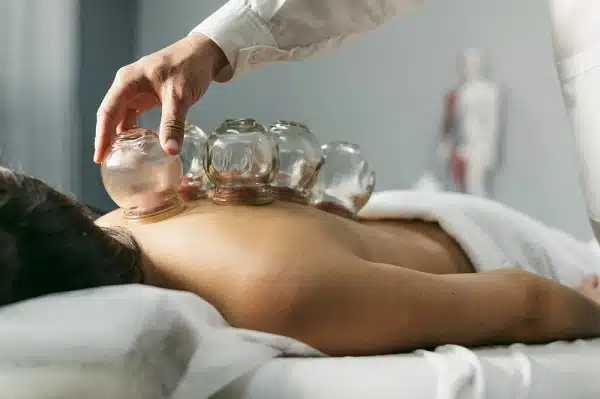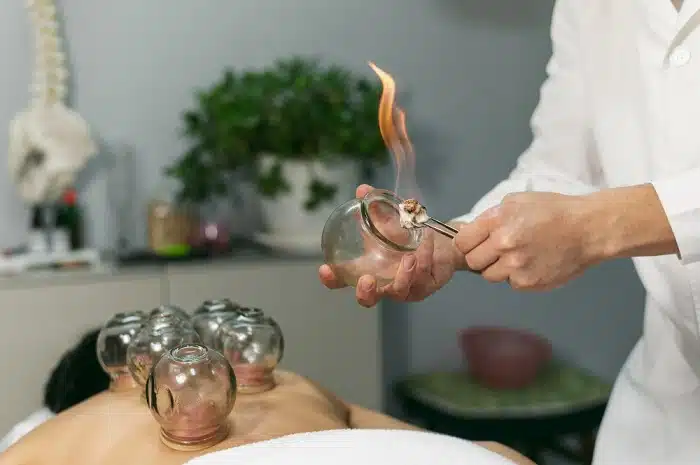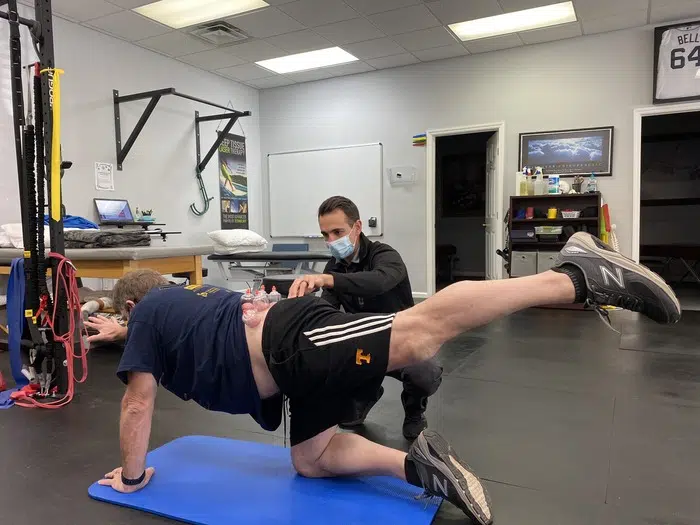
Cupping therapies have been used for thousands of years with a whole host of proposed benefits and uses. While modern medicine has continued to advance and change with new research, cupping has stood by as a viable, safe, and effective treatment for a number of different ailments. It is best when combined with other therapies and treatments but is a strong treatment even by itself.
Cupping therapy is the practice of applying suction to the skin and underlying tissues with either a manual pump or via a flammable substance which when ignited and sealed on the skin will create a vacuum. While fire cupping is still found in some clinics or spas, the vast majority of modern practices will be using a manual pump with plastic cups. This prevents any possible burns on the skin and allows the provider to control the amount of suction more accurately.

The primary result of cupping is increased blood flow to the area. When suction is applied to the skin, it causes a negative pressure which will then pull the skin up into the cup causing mild separation of the muscle, fascia, and fat below the skin. This negative pressure will cause a large increase in blood flow to the area which can help flush out any built-up cellular metabolic waste, and it can help bring in new nutrients and oxygen for the cells in that region. There is also a strong analgesic effect by applying the cup to the skin since it is going to cause local tissue stress. This effect can cause a release of pain-reducing chemicals from the body and local desensitization of that area.
Cupping can be performed with a number of techniques as well. The most common technique is simply applying suction to cups while the patient is simply lying down and then they are removed after 5-10 minutes. This allows for a more intense and localized treatment in a fewer number of locations. Another option is for the provider to move the cups around on the body gently and gradually with less suction which allows a broader area to be treated but with less intensity.

The final method I will list here, which is one of the most effective for mobilizing the tissue below the skin, is cupping with movement. This technique is performed by applying the cups with moderate to high levels of suction on the skin and then having the patient perform different movements which will move and stretch the underlying tissue. There are dozens of other methods of cupping not mentioned here as they are much less common and oftentimes much more invasive.
Bruising is a common outcome with all these techniques, but especially those techniques where the cup is immobile. These bruises will be circular and can be very deep in color, but this is an expected outcome and is not considered dangerous or damaging to the tissue.
Some of the most common diagnoses which cupping can help are low back pain, neck pain, carpal tunnel syndrome, fibromyalgia, and more. Due to the multiple mechanisms of how cupping works, it is able to treat a fairly large variety of disorders. It is especially effective in treating many types of soft tissue disorders or injuries to the muscles, tendons, and ligaments.
While cupping can be very effective and is generally very safe, it is not recommended you perform cupping therapy on yourself or loved ones without formal training first. Cupping improperly can cause damage to the underlying tissue. If you are suffering from any type of musculoskeletal pain, seek care from your local physical therapist, chiropractor, or physician first so that they may perform a full evaluation to ensure that you are making the best decisions possible for your own health and so they can guide you through your recovery journey.

430 Montbrook Lane Suite 203
Knoxville, TN
37919
Phone: 865-337-5574
Monday
7am-12pm & 1pm-6pm
Tuesday
7am-12pm & 1pm-4pm
Wednesday
7am-1pm
Thursday
7am-12pm & 1pm-6pm
Friday
7am-12pm & 1pm-4pm
Saturday & Sunday
Closed